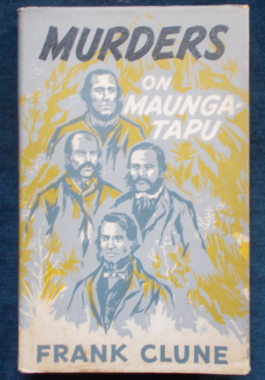- Sorry, this product is unavailable.
-
 On Christmas Eve 2002, Laci Peterson, a young wife and mother-to-be, disappeared from her home in Modesto, California...Praying for a happy ending, friends and family stood by Laci's grieving husband Scott. Four months later, Laci's decomposed body was found in the murky waters of San Francisco Bay. The body of her child had washed ashore about a mile away, after a possible "coffin birth". It was a sad closure to an exhaustive search, and a grim end to a marriage that by all account had appeared to be perfect. But the authorities already had a prime suspect...Scott Peterson's behavior had cast a mysterious shadow over the death of his pregnant wife - his alibi on the day of the disappearance was questionable; he admitted to an affair with another woman; and when he was finally charged with capital murder, he had altered his appearance. But it was only after a stunning criminal trial - packed with even more shocking revelations - that a jury convicted Scott Peterson of murder and sentenced him to death. With black and white photographs.
On Christmas Eve 2002, Laci Peterson, a young wife and mother-to-be, disappeared from her home in Modesto, California...Praying for a happy ending, friends and family stood by Laci's grieving husband Scott. Four months later, Laci's decomposed body was found in the murky waters of San Francisco Bay. The body of her child had washed ashore about a mile away, after a possible "coffin birth". It was a sad closure to an exhaustive search, and a grim end to a marriage that by all account had appeared to be perfect. But the authorities already had a prime suspect...Scott Peterson's behavior had cast a mysterious shadow over the death of his pregnant wife - his alibi on the day of the disappearance was questionable; he admitted to an affair with another woman; and when he was finally charged with capital murder, he had altered his appearance. But it was only after a stunning criminal trial - packed with even more shocking revelations - that a jury convicted Scott Peterson of murder and sentenced him to death. With black and white photographs. -
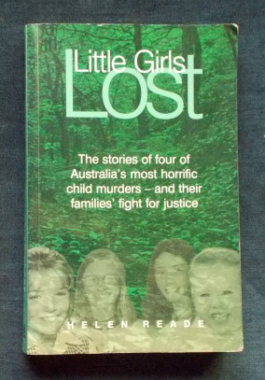 The heartbreaking stories of the murders of four girls - and a groundbreaking account of how the girls' grieving parents brought about changes in the law to ease the unbearable burden for themselves - and for the families of other homicide victims. Author Helen Reade gives the reader an intimate insight into the thoughts and actions of the victims' families as they recall the events leading up to - including - and after the appalling events. These include: the stabbing murder of 5-year-old Nicole Hanns in 1974; the sexual assault and murder of 9-year-old Ebony Simpson in 1992; and the rape and murders of Bega schoolgirls, 14-year-old Lauren Barry and her friend 16-year-old Nichole Collins in 1997. Illustrated with black and white photographs.
The heartbreaking stories of the murders of four girls - and a groundbreaking account of how the girls' grieving parents brought about changes in the law to ease the unbearable burden for themselves - and for the families of other homicide victims. Author Helen Reade gives the reader an intimate insight into the thoughts and actions of the victims' families as they recall the events leading up to - including - and after the appalling events. These include: the stabbing murder of 5-year-old Nicole Hanns in 1974; the sexual assault and murder of 9-year-old Ebony Simpson in 1992; and the rape and murders of Bega schoolgirls, 14-year-old Lauren Barry and her friend 16-year-old Nichole Collins in 1997. Illustrated with black and white photographs. -
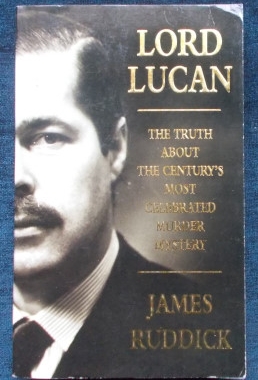
Lord Lucan: James Ruddick
$12.00This book promises the truth behind the century's most celebrated murder mystery. On a wintry night in November 1974, Sandra Rivett, nanny to the children of Lord and Lady Lucan, was brutally bludgeoned to death in the basement of their Belgravia home. Lady Lucan was also attacked and identified the attacker as her estranged husband, the 7th Earl of Lucan. That night, Lord Lucan vanished and has never been found, despite numerous sightings all over the world. The author has interviewed many of those involved, including, for the first time, Lord Lucan's wife Veronica. He gained access to the missing Earl's private papers, which yield remarkable new information. He also re-examines the forensic evidence and questions the key witnesses to produce the most likely explanation to date of what really happened on November 7, 1974. Illustrated with black and white photographs.
-
 October, 2011: At first it looked like a swag, said the grader driver who found the body just off the road outside the outback town of Katherine. Police identify the dead man as Ray Nicefero, who'd recently appeared in court for aggravated assault and breaching a domestic violence order. Three days later, three young local suspects were arrested: Christopher Malyschko; Darren 'Spider' Halfpenny; and 19-year-old indigenous Zak Grieve. A month later, Bronwyn Buttery, Ray's former partner and Christopher's mother, is arrested. But when the accused face court in the rough justice system of the Northern Territory, it soon becomes apparent there are few certain, provable facts to be had. Depending on who was talking, a loving friend could be an abusive monster; a battered wife a conniving temptress. And a joke between mates about the best way to dispose of a body becomes a conspiracy to murder. The outcome of the case is no less murky, thanks to the NT's mandatory sentencing laws, which, the judge said, 'brings about injustice'. This is the story of murder in an outback town and the extraordinary aftermath; and it raises important questions such as how an indigenous man who was not present at a murder can be sentenced to jail for twenty years.
October, 2011: At first it looked like a swag, said the grader driver who found the body just off the road outside the outback town of Katherine. Police identify the dead man as Ray Nicefero, who'd recently appeared in court for aggravated assault and breaching a domestic violence order. Three days later, three young local suspects were arrested: Christopher Malyschko; Darren 'Spider' Halfpenny; and 19-year-old indigenous Zak Grieve. A month later, Bronwyn Buttery, Ray's former partner and Christopher's mother, is arrested. But when the accused face court in the rough justice system of the Northern Territory, it soon becomes apparent there are few certain, provable facts to be had. Depending on who was talking, a loving friend could be an abusive monster; a battered wife a conniving temptress. And a joke between mates about the best way to dispose of a body becomes a conspiracy to murder. The outcome of the case is no less murky, thanks to the NT's mandatory sentencing laws, which, the judge said, 'brings about injustice'. This is the story of murder in an outback town and the extraordinary aftermath; and it raises important questions such as how an indigenous man who was not present at a murder can be sentenced to jail for twenty years. -
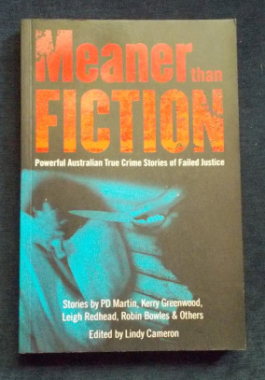 Just where is justice in Australia hiding? This brilliant new collection of true crime stories takes us into the Australian courts of the 1980s and '90s, back in time to the goldfields of the 1860s, and out to the island nation of Nauru in 2006 to explore how the scales of justice are unbalanced. This is a world in which the innocent still get locked up and the guilty too often go free. This collection is a must for all lovers of true crime. It will shock, outrage and intrigue. Features: Robin Bowles charts a mysterious case of sudden death; Lindy Cameron on the random shooting of Dr Andrew Taylor; Kathryn Deans on Heather Osland and how 13 years of torture was just the start of her ordeal; Liz Filleul on the disappearance of Elisabeth Membrey; Kerry Greenwood examines the role that crime writers have played in redressing miscarriages of justice; PD Martin on the Innocence Project, and Andrew Mallard; Susan Metcalfe on the tragedy of two Iraqis left behind on Nauru; Leigh Redhead asks how a man who secretly filmed his flatmates got away with it; Shelley Robertson, a modern forensic pathologist, questions the 'whole truth' of expert testimony; and Lucy Sussex on the unfortunate author Mary Fortune.
Just where is justice in Australia hiding? This brilliant new collection of true crime stories takes us into the Australian courts of the 1980s and '90s, back in time to the goldfields of the 1860s, and out to the island nation of Nauru in 2006 to explore how the scales of justice are unbalanced. This is a world in which the innocent still get locked up and the guilty too often go free. This collection is a must for all lovers of true crime. It will shock, outrage and intrigue. Features: Robin Bowles charts a mysterious case of sudden death; Lindy Cameron on the random shooting of Dr Andrew Taylor; Kathryn Deans on Heather Osland and how 13 years of torture was just the start of her ordeal; Liz Filleul on the disappearance of Elisabeth Membrey; Kerry Greenwood examines the role that crime writers have played in redressing miscarriages of justice; PD Martin on the Innocence Project, and Andrew Mallard; Susan Metcalfe on the tragedy of two Iraqis left behind on Nauru; Leigh Redhead asks how a man who secretly filmed his flatmates got away with it; Shelley Robertson, a modern forensic pathologist, questions the 'whole truth' of expert testimony; and Lucy Sussex on the unfortunate author Mary Fortune. -
 On December 10, 2003 an intruder waits inside the home of Kent and Tricia Whitaker. They and their two sons, Bart and Kevin, are returning from a dinner celebrating Bart's college graduation. Four shots ring out: Tricia and Kevin are killed instantly, Kent is wounded and Bart. struggling with the gunman, is also wounded. Three days later, as investigators explore leads in the search for justice for the victims, they find Bart had been leading a double life and he becomes the chief suspect. Kent believes the police are allowing the real killer to escape while they focus on Bart but when Bart disappears in the mountains of Mexico seven months later, Kent must face the possibility his son was involved in the murder. Fifteen months later, Bart is arrested and charged with masterminding the shootings; in March 2007, he is convicted and sentenced to death. How can a father survive the anguish of his son's actions and forgive such betrayal?
On December 10, 2003 an intruder waits inside the home of Kent and Tricia Whitaker. They and their two sons, Bart and Kevin, are returning from a dinner celebrating Bart's college graduation. Four shots ring out: Tricia and Kevin are killed instantly, Kent is wounded and Bart. struggling with the gunman, is also wounded. Three days later, as investigators explore leads in the search for justice for the victims, they find Bart had been leading a double life and he becomes the chief suspect. Kent believes the police are allowing the real killer to escape while they focus on Bart but when Bart disappears in the mountains of Mexico seven months later, Kent must face the possibility his son was involved in the murder. Fifteen months later, Bart is arrested and charged with masterminding the shootings; in March 2007, he is convicted and sentenced to death. How can a father survive the anguish of his son's actions and forgive such betrayal? -
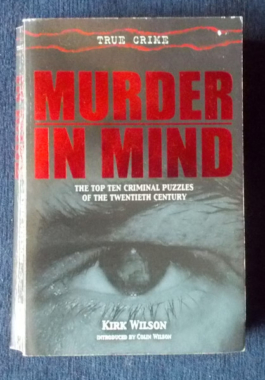 Investigative journalist Kirk Wilison tackles some of the most high-profile and confusing crimes to go unpunished. The investigations of top-ranking police officers, detectives and lawyers all failed to crack the riddles these cases created: who was responsible? And why were they never brought to justice? These are the crimes that we can never stop wondering about. Cases examined in this volume: John F. Kennedy's assassination; Jimmy Hoffa, union leader and mob associate, whose body was never found; Marilyn Monroe, screen goddess, whose 'suicide' raised more questions than it answered; Lord Lucan, peer and gambling addict, who vanished ito thin air amid accusations of murder; T. Cullen Davis, born-again Christian and the richest man ever to be tried for murder; Serge Rubenstein, the virtuoso swindler whose case was clouded by the fact that thousands of people had reason to wish him dead. Claus Von Bulow, lawyer, consultant and socialite, who made two attempts on the life of his American wife; Joan Robinson Hill may have been murdered by her husband John Hill - then it seemed that John Hill himself was murdered on his own front doorstep - but was he? Helen Vorhees Brach, who disappeared at age 65 - the victim of a slick pure-bred horse salesman?
Investigative journalist Kirk Wilison tackles some of the most high-profile and confusing crimes to go unpunished. The investigations of top-ranking police officers, detectives and lawyers all failed to crack the riddles these cases created: who was responsible? And why were they never brought to justice? These are the crimes that we can never stop wondering about. Cases examined in this volume: John F. Kennedy's assassination; Jimmy Hoffa, union leader and mob associate, whose body was never found; Marilyn Monroe, screen goddess, whose 'suicide' raised more questions than it answered; Lord Lucan, peer and gambling addict, who vanished ito thin air amid accusations of murder; T. Cullen Davis, born-again Christian and the richest man ever to be tried for murder; Serge Rubenstein, the virtuoso swindler whose case was clouded by the fact that thousands of people had reason to wish him dead. Claus Von Bulow, lawyer, consultant and socialite, who made two attempts on the life of his American wife; Joan Robinson Hill may have been murdered by her husband John Hill - then it seemed that John Hill himself was murdered on his own front doorstep - but was he? Helen Vorhees Brach, who disappeared at age 65 - the victim of a slick pure-bred horse salesman? -
 The Goatfell Murder: Near the summit of Goatfell, the body of Edwin Robert Rose was found stuffed under a granite boulder on 28 July 1889. He was a 32-year-old builder's clerk from London who had last been seen alive on the mountain a fortnight before. His head and face had been brutally smashed, probably by rocks. The last person seen in his company, a 26-year-old engineering worker known as John Annandale, was nowhere to be found. Annandale's real name was John Watson Laurie, a pattern maker for a Glasgow locomotive firm. He was caught by police two months later and at the end of a two-day trial under an impatient judge he was found guilty of murder, despite the lack of forensic evidence or any witnesses to the deed. But was there a miscarriage of justice? The Ardlamont Mystery: Alfred John Monson began working as a gentleman's tutor for the Hambrough family in 1891. In 1893 he took the lease on the Ardlamont estate in Argyll for the shooting season. On 10 August he took Windsor Dudley Cecil Hambrough, his 20-year-old pupil, for a day's hunting in an area of woodland. A third man joined them, Edward Scott, a friend of Monson. Estate workers heard a shot, then saw Monson and Scott running to Ardlamont House carrying the guns. Monson alleged that Hambrough had shot himself in the head by accident while climbing a fence. But with very large insurance policies having been taken out less than a week before... John Donald Merrett: He was tried for the murder of his mother, Bertha Merrett. It was at first believed that she had committed suicide - but it was discovered that Merrett had been defrauding her. His defence was skilful and the Jury returned a verdict of "Not Proven". Not proven - but was he innocent? The Portencross Murder: Mary Gunn, her sister Jessie McLaren and her sister's husband Alex McLaren were enjoying a quiet evening at an isolated cottage when six shoots were fired. Jessie and Alex were wounded - but Mary was dead. The family lived quietly; and were considered to be 'well-off' in the locality. The only clues were six footprints, a few spent bullets and evidence that a stranger had been asking the way to Portencross...
The Goatfell Murder: Near the summit of Goatfell, the body of Edwin Robert Rose was found stuffed under a granite boulder on 28 July 1889. He was a 32-year-old builder's clerk from London who had last been seen alive on the mountain a fortnight before. His head and face had been brutally smashed, probably by rocks. The last person seen in his company, a 26-year-old engineering worker known as John Annandale, was nowhere to be found. Annandale's real name was John Watson Laurie, a pattern maker for a Glasgow locomotive firm. He was caught by police two months later and at the end of a two-day trial under an impatient judge he was found guilty of murder, despite the lack of forensic evidence or any witnesses to the deed. But was there a miscarriage of justice? The Ardlamont Mystery: Alfred John Monson began working as a gentleman's tutor for the Hambrough family in 1891. In 1893 he took the lease on the Ardlamont estate in Argyll for the shooting season. On 10 August he took Windsor Dudley Cecil Hambrough, his 20-year-old pupil, for a day's hunting in an area of woodland. A third man joined them, Edward Scott, a friend of Monson. Estate workers heard a shot, then saw Monson and Scott running to Ardlamont House carrying the guns. Monson alleged that Hambrough had shot himself in the head by accident while climbing a fence. But with very large insurance policies having been taken out less than a week before... John Donald Merrett: He was tried for the murder of his mother, Bertha Merrett. It was at first believed that she had committed suicide - but it was discovered that Merrett had been defrauding her. His defence was skilful and the Jury returned a verdict of "Not Proven". Not proven - but was he innocent? The Portencross Murder: Mary Gunn, her sister Jessie McLaren and her sister's husband Alex McLaren were enjoying a quiet evening at an isolated cottage when six shoots were fired. Jessie and Alex were wounded - but Mary was dead. The family lived quietly; and were considered to be 'well-off' in the locality. The only clues were six footprints, a few spent bullets and evidence that a stranger had been asking the way to Portencross... -
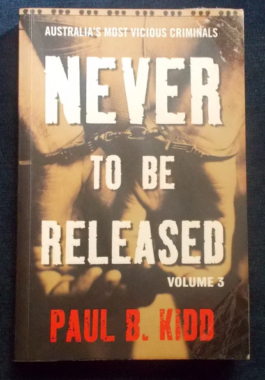 The third book in Kidd's chilling Never To Be Released series. Each year in Australia crimes are committed that are so evil their perpetrators are sentenced to the maximum punishment that the law allows. And seeing as there is no death penalty in any state of Australia, these worst-of-the-worst are sent to prison for life without the possibility of parole. It is termed 'never to be released'. To date, no criminal who has ever been handed down this sentence has been set free; they will die in jail as the law demands. But the fear of going to prison forever obviously does little to deter people from committing crimes of the most heinous nature. Kidd, a recognised authority on Australia's serial killers and criminals, looks at such cases as: the housewife who skinned her de-facto husband, cooked his head in a pot and served him up to his kids for dinner; a mild-mannered serial rapist and murderer who was so ordinary-looking that his victims trusted him immediately - time and time again; and a serial killer whose 'victim' turned up alive and well in the middle of his trial for her murder. Illustrated with black and white photographs.
The third book in Kidd's chilling Never To Be Released series. Each year in Australia crimes are committed that are so evil their perpetrators are sentenced to the maximum punishment that the law allows. And seeing as there is no death penalty in any state of Australia, these worst-of-the-worst are sent to prison for life without the possibility of parole. It is termed 'never to be released'. To date, no criminal who has ever been handed down this sentence has been set free; they will die in jail as the law demands. But the fear of going to prison forever obviously does little to deter people from committing crimes of the most heinous nature. Kidd, a recognised authority on Australia's serial killers and criminals, looks at such cases as: the housewife who skinned her de-facto husband, cooked his head in a pot and served him up to his kids for dinner; a mild-mannered serial rapist and murderer who was so ordinary-looking that his victims trusted him immediately - time and time again; and a serial killer whose 'victim' turned up alive and well in the middle of his trial for her murder. Illustrated with black and white photographs. -
 On April 4th, 1968, Dr. Martin Luther King, Jr. stepped out onto the balcony of the Lorraine Motel in Memphis, Tennessee, and into his killer's line of fire. One shot ended Dr. King's life and forever changed the course of American history - setting into motion a massive cover-up that has withstood a quarter-century of scrutiny. Now, after 18 years of intensive investigation, William F. Pepper tears away the veil of subterfuge that has hidden the truth of King's death - proving the innocence of convicted assassin James Earl Rayand revealing the cabal of government leaders and organised crime figures that masterminded the assassination of one of the most influential leaders of our age. The author was an associate of Dr. King and executive director of the independent political coalition that hoped to put King forward as a third party presidential candidate in 1968. After the murder, Pepper walked away from politics. But in 1977. Reverend Ralph Abernathy asked Pepper to interview James Earl Ray. Initially sceptical, Pepper became convinced that Ray was innocent of the crime and that Ray had always claimed, he had been manipulated by a man named Raul and was the victim of a set-up. But who was behind the set-up - and why?
On April 4th, 1968, Dr. Martin Luther King, Jr. stepped out onto the balcony of the Lorraine Motel in Memphis, Tennessee, and into his killer's line of fire. One shot ended Dr. King's life and forever changed the course of American history - setting into motion a massive cover-up that has withstood a quarter-century of scrutiny. Now, after 18 years of intensive investigation, William F. Pepper tears away the veil of subterfuge that has hidden the truth of King's death - proving the innocence of convicted assassin James Earl Rayand revealing the cabal of government leaders and organised crime figures that masterminded the assassination of one of the most influential leaders of our age. The author was an associate of Dr. King and executive director of the independent political coalition that hoped to put King forward as a third party presidential candidate in 1968. After the murder, Pepper walked away from politics. But in 1977. Reverend Ralph Abernathy asked Pepper to interview James Earl Ray. Initially sceptical, Pepper became convinced that Ray was innocent of the crime and that Ray had always claimed, he had been manipulated by a man named Raul and was the victim of a set-up. But who was behind the set-up - and why? -

Out Of Control: Steven Long
$12.00Clara and David Harris were married on Valentine's Day. Young and in love, they developed a thriving dental business, built a half-million dollar mansion and raised the perfect family. Then whispers of David's affair with his office assistant began to circulate through their exclusive Houston social circle. A private detective confirmed the rumours. When Clara saw David with his mistress, she attacked the woman - then got behind the wheel of her silver Mercedes and crushed her husband to death under its wheels. A moment of madness - or a calculated crime of passion? What the headlines ultimately revealed was a high profile marriage running on empty, marital infidelity, a woman's deadly passion and the private hell behind the public life of the rich and privileged. With 8 pages of black and white photographs.
-
 A revised, expanded collection of true crime by Australia's foremost crime writers that digs beneath the polite exterior of modern Australian life to expose its chilling core. It details the exploits of criminal families and examines the gene of pure evil that drives maniacs to randomly kill; it also explores the effect on innocent victims caught in the wrong place at the wrong time. Also included is the unstinting contribution from the cops who daily put their lives on the line and the ordinary individuals who stand up and fight back. Stories in this volume include: Donald Mackay and the Australia Mafia; the Queen Street Massacre; Ivan Milat; serial killer Paul Denyer; the Anita Cobby murder; the murder of taxi driver Peter Coe by teenagers; the Crawford murders; life as an undercover cop; and much more. Illustrated with black and white photographs.
A revised, expanded collection of true crime by Australia's foremost crime writers that digs beneath the polite exterior of modern Australian life to expose its chilling core. It details the exploits of criminal families and examines the gene of pure evil that drives maniacs to randomly kill; it also explores the effect on innocent victims caught in the wrong place at the wrong time. Also included is the unstinting contribution from the cops who daily put their lives on the line and the ordinary individuals who stand up and fight back. Stories in this volume include: Donald Mackay and the Australia Mafia; the Queen Street Massacre; Ivan Milat; serial killer Paul Denyer; the Anita Cobby murder; the murder of taxi driver Peter Coe by teenagers; the Crawford murders; life as an undercover cop; and much more. Illustrated with black and white photographs. -
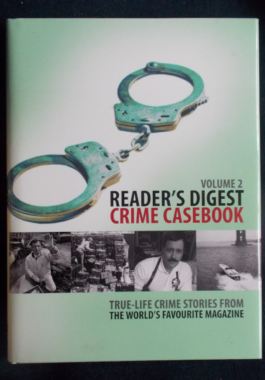 A cast of drug smugglers, serial killers, forensic boffins, ruthless gang leaders, dedicated detectives and ordinary citizens. Sixteen gripping accounts: in this volume: Tracking the Fox: Penetrating the world's leading marijuana smuggling ring. Zero Hour For The Zodiac: A strange twist of fate gave police a crucial lead. Terror At The Door: The ruthless gang had spread terror throughout southern England...they had to be caught before someone was killed. In The Footsteps Of Sherlock Holmes: Alphonse Lutringer had accidentally killed his wife and in a panic, burned her body parts in the basement. But how accidental had her death really been? Solved - The Mystery of Piltdown Man: It was the greatest scientific hoax of modern times - but who was behind it? Free To Kill: Two lives converged on a collision course...leading to a vicious crime and the death of a young girl. A Trap For Mr Untouchable: He was Europe's top drug trafficker and for five years he laughed in the faces of the police and Customs. The Murder Of Justice: The Florida cop and the 19 year-old street kid should never have met - but one night their paths crossed briefly with disastrous results. The Case Of The Missing Keys: With just one piece of vital evidence, the Manchester police could catch the killer - but the clue had vanished... Manhunt On The Heroin Road: The nickel-and-dime drug bust and routine investigation that led an investigator into the shadowy world of a sinister Chinese cartel. The Boy Who Never Came Home: The abduction of Jacob Wetterling took place over 30 years ago. Despite a massive search and investigation, no trace of him has ever been found. Hunted Like An Animal: The young American pushed his way though the dense Peruvian jungle, hunted by the men who had just killed his friend. A Cop's Life: Frankie McDonald was the black sheep of the family. No-one expected he would follow in the footsteps of his father and grandfather to become a New York City cop. If I Can't Have You, Nobody Will: Brian Anderson had stalked Laura Kucera for months - and now she was at his mercy. Who Wanted Aaron Dead? When Detective Jim Muchaud investigated the slaying of a teenager in his bedroom, clues led him to a shocking discovery. Terrorised By A Stalker: It could be your daughter, friend or workmate subjected to unwanted attention. Caution - she may be in danger...Illustrated with colour and black and white photographs.
A cast of drug smugglers, serial killers, forensic boffins, ruthless gang leaders, dedicated detectives and ordinary citizens. Sixteen gripping accounts: in this volume: Tracking the Fox: Penetrating the world's leading marijuana smuggling ring. Zero Hour For The Zodiac: A strange twist of fate gave police a crucial lead. Terror At The Door: The ruthless gang had spread terror throughout southern England...they had to be caught before someone was killed. In The Footsteps Of Sherlock Holmes: Alphonse Lutringer had accidentally killed his wife and in a panic, burned her body parts in the basement. But how accidental had her death really been? Solved - The Mystery of Piltdown Man: It was the greatest scientific hoax of modern times - but who was behind it? Free To Kill: Two lives converged on a collision course...leading to a vicious crime and the death of a young girl. A Trap For Mr Untouchable: He was Europe's top drug trafficker and for five years he laughed in the faces of the police and Customs. The Murder Of Justice: The Florida cop and the 19 year-old street kid should never have met - but one night their paths crossed briefly with disastrous results. The Case Of The Missing Keys: With just one piece of vital evidence, the Manchester police could catch the killer - but the clue had vanished... Manhunt On The Heroin Road: The nickel-and-dime drug bust and routine investigation that led an investigator into the shadowy world of a sinister Chinese cartel. The Boy Who Never Came Home: The abduction of Jacob Wetterling took place over 30 years ago. Despite a massive search and investigation, no trace of him has ever been found. Hunted Like An Animal: The young American pushed his way though the dense Peruvian jungle, hunted by the men who had just killed his friend. A Cop's Life: Frankie McDonald was the black sheep of the family. No-one expected he would follow in the footsteps of his father and grandfather to become a New York City cop. If I Can't Have You, Nobody Will: Brian Anderson had stalked Laura Kucera for months - and now she was at his mercy. Who Wanted Aaron Dead? When Detective Jim Muchaud investigated the slaying of a teenager in his bedroom, clues led him to a shocking discovery. Terrorised By A Stalker: It could be your daughter, friend or workmate subjected to unwanted attention. Caution - she may be in danger...Illustrated with colour and black and white photographs. -

The scene awaiting the policemen entering the charming suburban house at 313 Carl Drive was one they would never forget. Three children and their mother had been hacked to death in their beds, the sheets and walls soaked in blood. A butcher knife and an axe lay nearby. There appeared to be no physical evidence and the detective at first suspected a bungled robbery. But as the clues were sifted and family members and friends were questioned, an appalling possibility presented itself: Could David Hendricks, grief-stricken father, away on a business trip, have methodically killed his family before he left? And why would a successful business man and devoted member of a fundamentalist religious group want his entire family eliminated? The prosecution painted a much darker picture of David Hendricks...Convicted by his first jury, awarded a new trial, a second jury concluded that Hendricks had not been proven guilty - beyond a reasonable doubt. Illustrated with black and white photos.
-
 Two wives, two violent murders and a fight for justice...the story of one of the more bizarre murder investigations in Australia’s history. Two wives die in suspicious co-incidence or, as husband Thomas Keir describes it, ‘bad luck’? Three years after Thomas Keir alleged his first wife Jean deserted him and her young son for another man, his second wife Rosalina, Jean’s cousin, lay scorched and strangled on her bed. Arriving on the scene, Detective Peter Seymour realised he was dealing with the world’s unluckiest husband or a serial wife killer.While Keir was remarkably found ‘not guilty’ of Rosalina’s murder - despite a clear cut case - her death unlocked the mystery of Jean’s disappearance. A subsequent police investigation lead to the discovery of seven small fragments of Jean’s bones - fingers, knuckles and toes - buried deep under the same house in which Rosalina died. Keir’s ‘grieving husband’ act was suddenly in question. The investigation revealed Thomas Keir was a man so jealous he hated even his own baby son touching his wife, Jean. A man so possessive he threatened he would cut her up and feed her to the dogs if she ever left him. A man who thought he could commit the perfect crime and publicly taunted the police through the media. This is Detective Peter Seymour's relentless pursuit of justice and his own family sacrifices, through the drama of the police investigation into Jean’s death, and the three trials, convictions, and appeals that would take fifteen years to reach their final conclusion. Photograph illustrations.
Two wives, two violent murders and a fight for justice...the story of one of the more bizarre murder investigations in Australia’s history. Two wives die in suspicious co-incidence or, as husband Thomas Keir describes it, ‘bad luck’? Three years after Thomas Keir alleged his first wife Jean deserted him and her young son for another man, his second wife Rosalina, Jean’s cousin, lay scorched and strangled on her bed. Arriving on the scene, Detective Peter Seymour realised he was dealing with the world’s unluckiest husband or a serial wife killer.While Keir was remarkably found ‘not guilty’ of Rosalina’s murder - despite a clear cut case - her death unlocked the mystery of Jean’s disappearance. A subsequent police investigation lead to the discovery of seven small fragments of Jean’s bones - fingers, knuckles and toes - buried deep under the same house in which Rosalina died. Keir’s ‘grieving husband’ act was suddenly in question. The investigation revealed Thomas Keir was a man so jealous he hated even his own baby son touching his wife, Jean. A man so possessive he threatened he would cut her up and feed her to the dogs if she ever left him. A man who thought he could commit the perfect crime and publicly taunted the police through the media. This is Detective Peter Seymour's relentless pursuit of justice and his own family sacrifices, through the drama of the police investigation into Jean’s death, and the three trials, convictions, and appeals that would take fifteen years to reach their final conclusion. Photograph illustrations. -
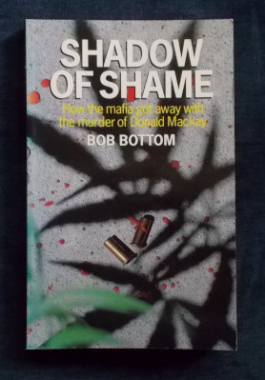
Shadow Of Shame: Bob Bottom
$12.00Donald Bruce MacKay, the Griffith anti-drugs campaigner, disappeared without trace from the carpark of the Griffith Hotel in July 1977. Mackay had been a secret informant for polce against illicit growing of marijuana growing in the Riverina area. His ‘disappearance’ became Australia’s first political assassination. This is the shocking story of how the mafia planned and executed his murder. Throughout the shameful decade that followed, some people, even at senior levels of politics and law enforcement, connived to cover up this mafia murder. Bob Bottom, a crime journalist, traces the birth and growth of the mafia in Griffith, known to police as a centre for serious crime as early as the 1930s. By the 1970s, when Mackay first became concerned about illicit drug activities in his town, those controlling organised crime had become far more sophisticated. Bribery, corruption and pay-offs had become commonplace. Serious questions about NSW police investigations into Australia’s most notorious murder precipitated a special commission of enquiry – nine years later...Bottom also details how drug boss Robert Trimbole lived safely in Spain despite international police knowledge of his whereabouts and of the failure of Australian authorities to bring him to justice. Illustrated with black and white photographs. -
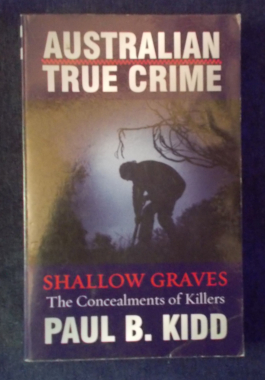 Shallow graves play a grim part in many of Australia's most mysterious, bizarre and horrendous murder cases. And Australia's bushland, beaches, deserts, foreshores and suburban landscapes offer many opportunities for a murderer to hide his victim. But in this updated edition, Kidd points out how even the best-laid plans of the most devious can go astray when a body turns up. Illustrated with black and white photographs.
Shallow graves play a grim part in many of Australia's most mysterious, bizarre and horrendous murder cases. And Australia's bushland, beaches, deserts, foreshores and suburban landscapes offer many opportunities for a murderer to hide his victim. But in this updated edition, Kidd points out how even the best-laid plans of the most devious can go astray when a body turns up. Illustrated with black and white photographs.



